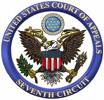Tribe on the Use of Foreign Law
 In an earlier post, I outlined the basic themes of Laurence Tribe’s The Invisible Constitution. One specific section that was of particular interest to me was Tribe’s defense of the use of foreign law in constitutional interpretation. I run into this controversial practice every spring when I teach Atkins v. Virginia, 536 U.S. 304 (2002), and Roper v. Simmons, 543 U.S. 51 (2005). Interpreting the Cruel and Unusual Punishment Clause of the Eighth Amendment, Atkins banned execution of the mentally retarded, while Roper outlawed the death penalty for juvenile defendants. In both cases, the majority drew intense criticism for citing foreign law in support of its holding.
In an earlier post, I outlined the basic themes of Laurence Tribe’s The Invisible Constitution. One specific section that was of particular interest to me was Tribe’s defense of the use of foreign law in constitutional interpretation. I run into this controversial practice every spring when I teach Atkins v. Virginia, 536 U.S. 304 (2002), and Roper v. Simmons, 543 U.S. 51 (2005). Interpreting the Cruel and Unusual Punishment Clause of the Eighth Amendment, Atkins banned execution of the mentally retarded, while Roper outlawed the death penalty for juvenile defendants. In both cases, the majority drew intense criticism for citing foreign law in support of its holding.
Based on Atkins and Roper anyway — I am admittedly not as familiar with some of the Court’s other uses of foreign law — I think that Tribe is right about at least two things.

